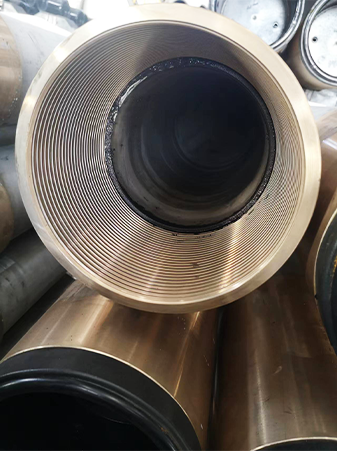- Afrikaans
- Albanian
- Amharic
- Arabic
- Armenian
- Azerbaijani
- Basque
- Belarusian
- Bengali
- Bosnian
- Bulgarian
- Catalan
- Cebuano
- Corsican
- Croatian
- Czech
- Danish
- Dutch
- English
- Esperanto
- Estonian
- Finnish
- French
- Frisian
- Galician
- Georgian
- German
- Greek
- Gujarati
- Haitian Creole
- hausa
- hawaiian
- Hebrew
- Hindi
- Miao
- Hungarian
- Icelandic
- igbo
- Indonesian
- irish
- Italian
- Japanese
- Javanese
- Kannada
- kazakh
- Khmer
- Rwandese
- Korean
- Kurdish
- Kyrgyz
- Lao
- Latin
- Latvian
- Lithuanian
- Luxembourgish
- Macedonian
- Malgashi
- Malay
- Malayalam
- Maltese
- Maori
- Marathi
- Mongolian
- Myanmar
- Nepali
- Norwegian
- Norwegian
- Occitan
- Pashto
- Persian
- Polish
- Portuguese
- Punjabi
- Romanian
- Russian
- Samoan
- Scottish Gaelic
- Serbian
- Sesotho
- Shona
- Sindhi
- Sinhala
- Slovak
- Slovenian
- Somali
- Spanish
- Sundanese
- Swahili
- Swedish
- Tagalog
- Tajik
- Tamil
- Tatar
- Telugu
- Thai
- Turkish
- Turkmen
- Ukrainian
- Urdu
- Uighur
- Uzbek
- Vietnamese
- Welsh
- Bantu
- Yiddish
- Yoruba
- Zulu
Brass Pipe Couplings for Reliable Plumbing Connections and Efficient Fluid Transfer Solutions
Understanding Brass Pipe Couplings A Comprehensive Guide
Brass pipe couplings are essential components in various plumbing and construction applications, providing a reliable and efficient means of connecting two sections of piping. Their popularity stems from brass’s inherent properties, including corrosion resistance, durability, and excellent malleability, making it an ideal material for various environments and conditions. This article delves into the characteristics, types, applications, and installation considerations of brass pipe couplings, offering readers a detailed understanding of this critical plumbing fixture.
What is a Brass Pipe Coupling?
A brass pipe coupling is a fitting used to join two lengths of pipe, allowing for the continuation of fluid flow while ensuring a secure and stable connection. The coupling can accommodate pipes of various materials, including copper, PVC, and PEX, as long as the fittings match in diameter. Brass couplings come in various sizes, designs, and configurations, such as threaded, slip-on, and compression fittings, enabling their use in multiple applications.
Characteristics of Brass
Brass is an alloy primarily composed of copper and zinc. Its unique properties make it suitable for plumbing applications
1. Corrosion Resistance Brass is resistant to corrosion, which is crucial in preventing leaks and extending the lifespan of plumbing systems. This characteristic makes it ideal for applications involving water and other fluids, regardless of whether they are hot or cold.
2. Malleability The malleability of brass allows it to be formed into various shapes and sizes without breaking. This flexibility is advantageous in creating intricate designs and fittings such as couplings.
3. Thermal Conductivity Brass offers excellent thermal conductivity, which is particularly useful in heating applications, including radiators and hot water systems.
4. Aesthetic Appeal The yellowish-golden color of brass adds a visually pleasing element to plumbing fixtures, making it a popular choice for visible installations.
Types of Brass Pipe Couplings
There are several types of brass couplings available on the market, each designed for specific applications
1. Threaded Couplings These couplings have internal or external threads that allow them to screw onto the ends of pipes. They are commonly used for connecting pipes in a way that allows for disassembly and maintenance.
2. Slip Couplings Slip couplings are designed to fit over the ends of two pipes, creating a connection that does not require threading. They are often used in applications where a tight fit and easy installation are necessary.
brass pipe coupling

3. Compression Couplings These couplings use a compression fitting to create a watertight seal between the pipe and the coupling. They are ideal for connecting pipes of different materials without needing additional fittings.
Applications of Brass Pipe Couplings
Brass pipe couplings are versatile and utilized in numerous applications, including
- Residential Plumbing In homes, brass couplings are frequently used in plumbing fixtures and connections, ensuring durability and leak resistance.
- Industrial Use In industrial settings, brass couplings are employed in cooling systems, hydraulic systems, and process piping due to their robustness and reliability.
- Heating and Cooling Systems Brass couplings are commonly found in HVAC systems, where they connect various piping components for optimal thermal efficiency.
Installation Considerations
When installing brass pipe couplings, several factors should be considered to ensure a successful connection
1. Proper Sizing Select the right size of coupling that matches the diameter and type of the pipes being joined.
2. Thread Sealing For threaded couplings, use appropriate thread sealants or Teflon tape to prevent leaks.
3. Tightening Ensure that couplings are tightened securely but avoid over-tightening, which can damage the threads or the tubing.
4. Compatibility Always check the compatibility of the coupling with the specific pipes used, especially when mixing materials.
In conclusion, brass pipe couplings are vital components that enhance the efficiency and reliability of plumbing systems. Their corrosion resistance, durability, and versatility make them an excellent choice for various applications, from residential homes to large-scale industrial projects. Understanding their characteristics, types, and installation methods equips users with the knowledge to make informed choices in their plumbing endeavors.
-
Well Casing Extension Couplings – Applications and InstallationNewsJun.06,2025
-
Types of Crossover Subs in Drilling & CompletionNewsJun.06,2025
-
Key Features of High-Quality Tubing Pup JointsNewsJun.06,2025
-
Installation and Maintenance Tips for Steel Couplings for PipeNewsJun.06,2025
-
How to Select the Right Pup Joint for Oil & Gas OperationsNewsJun.06,2025
-
Applications of Stainless Steel Pipe CouplingsNewsJun.06,2025







